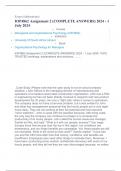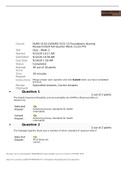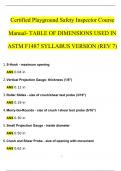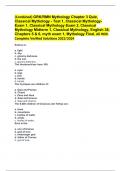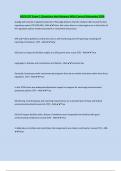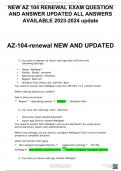Exam (elaborations)
Exam (elaborations) IOP4862 Assignment 2 (COMPLETE ANSWERS) 2024 - 1 July 2024 • Course • Managerial and Organisational Psychology (IOP4862) • Institution • University Of South Africa (Unisa) • Book • Organizational Psychology for Managers IOP4862 Assignm
Exam (elaborations) IOP4862 Assignment 2 (COMPLETE ANSWERS) 2024 - 1 July 2024 • Course • Managerial and Organisational Psychology (IOP4862) • Institution • University Of South Africa (Unisa) • Book • Organizational Psychology for Managers IOP4862 Assignment 2 (COMPLETE ANSWERS)...
[Show more]
